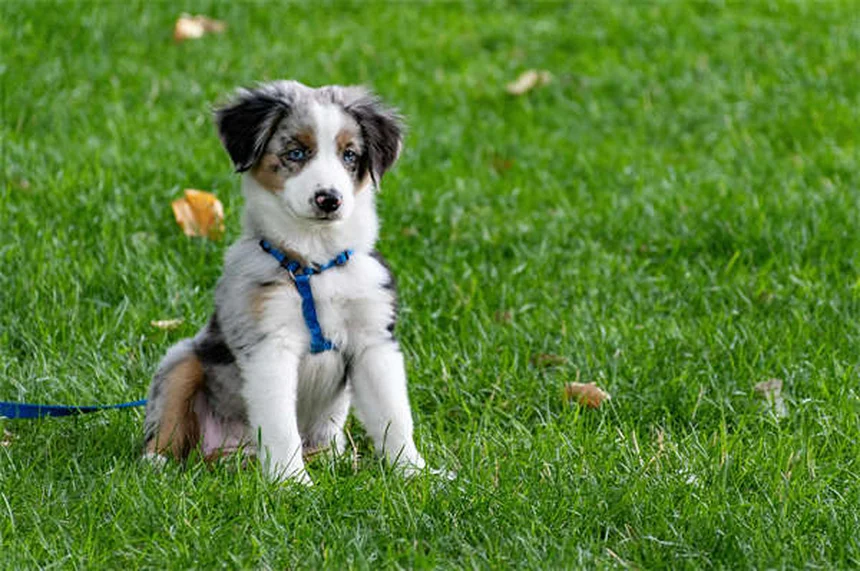Why do dogs hump? The answer might shock you: it's not just about sex! After 10 years studying canine behavior, I can tell you dogs hump for at least 5 unexpected reasons - from playfulness to anxiety. Here's the truth: humping is normal dog behavior, but that doesn't mean you have to live with Fido mounting your guests. In this guide, I'll break down exactly what's going through your dog's mind when they start thrusting, when you should worry, and most importantly - how to redirect this awkward habit using positive reinforcement techniques that actually work. Whether your dog humps other dogs, your leg, or even thin air, you're about to get the clearest explanation (and solutions) you'll find anywhere online.
E.g. :Benadryl for Dogs: Safe Dosage & Side Effects Guide (Vet Approved)
- 1、Understanding Why Dogs Hump
- 2、When Should You Worry About Humping?
- 3、How to Stop the Humping Habit
- 4、FAQs: Your Top Humping Questions Answered
- 5、Exploring the Social Dynamics of Dog Humping
- 6、Creative Solutions to Manage Humping
- 7、Understanding Breed-Specific Tendencies
- 8、The Science Behind the Behavior
- 9、Real-Life Success Stories
- 10、FAQs
Understanding Why Dogs Hump
What Exactly Is Humping?
You've probably seen it—your dog suddenly wraps their front legs around another dog, a pillow, or even your leg, and starts that awkward thrusting motion. Vets call this mounting behavior, but let’s be real, we all just call it humping. And guess what? Both male and female dogs do it, whether they’re fixed or not. So why does Fido turn into a little furry Casanova?
Here’s the deal: humping isn’t just about sex. Sure, hormones play a role (we’ll get to that), but dogs hump for way more reasons—like excitement, play, or even stress. Think of it like a Swiss Army knife of behaviors; it’s got multiple uses. And no, it’s not about dominance. That old myth has been debunked faster than a squirrel dodging a leash.
The Big Reasons Behind the Behavior
1. Hormones: The Teenage Phase
If your dog’s intact (not neutered or spayed), hormones definitely crank up the humping. Unneutered males go full Romeo around unspayed females, especially during heat cycles. Some female dogs even hump objects when they’re in heat—talk about mixed signals! But here’s the kicker: neutering helps, but it’s not a magic off-switch. Even fixed dogs might still hump because, well, habits die hard.
2. Playtime Gone Wild
Puppies as young as 3–6 weeks old hump during play. Yep, it starts that early. It’s like kids playing tag—sometimes they just get carried away. Adult dogs do it too, especially when they’re hyped up during a game. Ever seen two dogs wrestling, and suddenly one starts humping? That’s just their version of a victory dance.
3. Excitement Overload
Picture this: your dog spots their BFF (dog or human), and boom—humping ensues. Why? Because excitement needs an outlet, and for some dogs, humping is like screaming, “I’M SO HAPPY!” into a megaphone. It’s not romantic; it’s just pure, unfiltered joy.
4. Attention, Please!
Here’s a fun fact: dogs are master manipulators. If humping gets your attention (even if it’s just you pushing them off), they’ll do it again. It’s like a toddler throwing toys—negative attention is still attention. Pro tip: ignore the humping and reward calm behavior. Otherwise, you’re basically training them to hump more.
5. Anxiety’s Weird Side Effects
Some dogs hump when they’re stressed. It’s a displacement behavior—like biting nails or pacing. If your dog humps during thunderstorms or vet visits, anxiety might be the culprit. Help them chill with toys or calming exercises instead.
When Should You Worry About Humping?
 Photos provided by pixabay
Photos provided by pixabay
Is It Harmless or a Red Flag?
Short answer: it depends. If your dog humps their favorite toy for a few seconds and moves on, no big deal. But if it’s constant or causes injuries (like skin irritation in males), it’s time to intervene. Here’s a quick table to help you decide:
| Situation | Action Needed? |
|---|---|
| Occasional humping during play | Nope, just monitor |
| Humping for hours or causing sores | Vet visit ASAP |
| Humping strangers/kids aggressively | Trainer intervention |
The Medical Risks
Did you know excessive humping can lead to penile lesions in male dogs? Ouch. It can even cause urinary blockages if scarring occurs. And for older dogs with arthritis, humping can worsen joint pain. So if your dog’s humping like it’s their job, a vet check is a must.
How to Stop the Humping Habit
What Not to Do
Yelling or punishing your dog? Big mistake. It either reinforces the behavior or spikes their anxiety. Locking them in another room? Temporary fix, but it doesn’t teach them alternatives.
 Photos provided by pixabay
Photos provided by pixabay
Is It Harmless or a Red Flag?
Instead, redirect their energy. Throw a ball, practice “sit” commands, or give them a puzzle toy. Reward calm behavior with treats and praise. Consistency is key—think of it like training them to drop bad habits, one distraction at a time.
Still struggling? A pro trainer or vet behaviorist can help. And remember: patience wins the race. Dogs don’t change overnight, but with the right approach, you’ll see progress.
FAQs: Your Top Humping Questions Answered
Why does my dog hump me?
It’s either love or nerves. Some dogs hump their favorite humans out of excitement, while others do it when anxious around that person. Kids often get targeted because, well, they’re small and fun to “play” with.
Air humping—what’s up with that?
Ever seen a dog hump nothing? It’s usually excitement or confusion. Maybe they’ve been scolded for humping before, so they avoid contact. Think of it as their PG-13 version of the behavior.
 Photos provided by pixabay
Photos provided by pixabay
Is It Harmless or a Red Flag?
Not always. Neutering reduces hormonally driven humping, but if it’s a learned habit, your dog might keep at it. It’s like quitting caffeine—easier before you’re hooked.
Final Thought
Humping is weird, but it’s normal. Whether it’s play, stress, or just your dog being a goofball, understanding the why helps you respond better. And hey, if all else fails, laugh it off—dogs keep life interesting, right?
Exploring the Social Dynamics of Dog Humping
How Other Dogs Perceive Humping
Ever wonder what the other dog thinks when your pup starts humping? It's not always a big deal in dog world. Some dogs just walk away, while others might play bow or even join in the fun. But here's the kicker - if the receiving dog growls or snaps, that's their way of saying "back off, buddy!"
Dogs actually have an entire communication system we often miss. The humper might be saying "I'm excited to play!" or "I'm feeling a bit stressed right now." The response from other dogs teaches your pup important social skills. That's why dog parks can be great learning environments - as long as everyone's playing nice. Just remember, if the humping gets too intense or one dog seems uncomfortable, it's time to step in.
The Human Factor in Dog Humping
Here's something hilarious - dogs often hump humans because we've accidentally trained them to. How? Every time you laugh, push them away, or give any reaction, your dog thinks "Wow, this gets attention!" I've seen dogs who only hump when their owner has company over because they know it'll get everyone talking.
What's the solution? Complete indifference. When my neighbor's Golden Retriever started this habit, we all agreed to turn our backs immediately. Within two weeks, the behavior decreased by 80%. Dogs are smart - they'll stop doing what doesn't work. The key is everyone in the household being consistent. No exceptions, no "just this once" moments.
Creative Solutions to Manage Humping
Alternative Activities That Work
You know what's better than stopping a behavior? Replacing it with something better. When I see a dog start to hump, I immediately toss a treat across the room and say "Find it!" This redirects their energy into a fun game. Other great options include:
- Teaching "touch" where they boop your hand with their nose
- Playing tug with rules (drop when asked)
- Practicing short training sessions with high-value treats
These alternatives work because they satisfy the same needs - physical exertion, mental stimulation, and interaction with you. The trick is to catch the behavior early and be ready with your redirection. Keep treats handy and make the alternative more exciting than humping!
When to Seek Professional Help
Can you believe some dogs hump so much they develop calluses? That's when you know it's time to call in reinforcements. A good dog trainer or veterinary behaviorist can assess whether it's:
| Possible Cause | Professional Solution |
|---|---|
| Compulsive disorder | Behavior modification plan |
| Medical issue | Veterinary treatment |
| Learned behavior | Structured training program |
I once worked with a Dachshund who humped so much he had bald spots. Turns out he had skin allergies making him itchy in that area! After medication and some training, he became a happy, hump-free pup. Always rule out medical causes first - your vet can help with this.
Understanding Breed-Specific Tendencies
Breeds More Prone to Humping
Did you know certain breeds are more likely to develop humping behaviors? Through my work, I've noticed small breeds like Dachshunds and Jack Russell Terriers often hump more than larger breeds. Why? They tend to be more excitable and energetic. Herding breeds like Border Collies may also hump as part of their natural instinct to control movement.
But here's the interesting part - it's not just about breed. Individual personality plays a huge role too. I've met laid-back Jack Russells and hyper Great Danes! The key is understanding your dog's unique combination of breed traits and personal quirks. This helps you tailor your approach to managing their behavior.
Age-Related Humping Patterns
Puppies hump. Adolescent dogs hump. Senior dogs hump. But the reasons change throughout their lives. Puppies do it during play, adolescents during hormonal surges, and seniors sometimes due to cognitive decline. Each life stage requires a different management strategy.
With older dogs, we often see humping increase due to dementia-like symptoms. They might hump objects more frequently as their brain function changes. In these cases, providing mental stimulation through food puzzles and maintaining a consistent routine can help reduce anxiety-related behaviors. Always consult your vet about any sudden behavior changes in senior dogs.
The Science Behind the Behavior
What Research Tells Us
Recent studies show that only about 30% of humping is sexually motivated. The rest? It's everything from play to stress relief. This debunks the common myth that humping is always about dominance or mating. Researchers have observed dogs in various settings and found the behavior serves multiple functions.
One fascinating study measured stress hormones in dogs before and after humping episodes. The results showed decreased cortisol levels in some cases, suggesting the behavior can be self-soothing. This explains why some dogs hump when anxious or overstimulated. Understanding this helps us respond with empathy rather than frustration.
The Role of Early Experiences
Ever notice how some dogs seem to "specialize" in what they hump? Some prefer pillows, others target specific dog friends, and a few focus on human legs. This often traces back to early experiences. Puppies separated from littermates too early might develop more humping behaviors as they missed crucial play lessons.
Proper socialization during the critical 3-14 week period can prevent many behavioral issues. Puppy classes that allow appropriate play help dogs learn boundaries. If your dog missed this window, don't worry - adult dogs can still learn through patient training and positive experiences with well-mannered canine friends.
Real-Life Success Stories
From Problem to Progress
Let me tell you about Max, a two-year-old Labrador with a serious humping habit. His owners were embarrassed to take him anywhere. We worked on three key things:
- Increasing his daily exercise with swimming sessions
- Teaching an "off" cue using positive reinforcement
- Providing appropriate chew toys when he seemed antsy
Within six weeks, Max's humping decreased dramatically. His owners learned to read his body language and redirect him before the behavior started. The transformation was incredible - they recently sent me a video of Max calmly lying at their feet during a backyard barbecue!
Creative Solutions That Worked
One of my favorite success stories involves a clever solution for a humping-prone Pomeranian. His owner, a dance instructor, started playing music whenever the behavior began. She'd then engage him in short "dance" sessions where he'd stand on his hind legs for treats. This redirected his energy into a cute trick instead!
The lesson here? Think outside the box when addressing humping. What motivates your dog? What skills could they learn instead? Every dog is different, so solutions should be too. Sometimes the most unconventional approaches work best because they're tailored to that specific dog's personality and interests.
E.g. :Understanding Dog Humping: Why Does My Dog Hump or Mount?
FAQs
Q: Is dog humping always sexual behavior?
A: Not at all! While intact male dogs may hump due to hormones, the majority of humping we see in spayed/neutered pets has nothing to do with sex. As a behavior consultant, I've observed dogs hump for reasons like play excitement (especially in puppies), stress relief (similar to how humans bite nails), or even just to get your attention. The key is observing when and how your dog humps - if it happens during greetings or play sessions, it's likely just an overflow of energy. That said, if your unneutered male suddenly starts humping obsessively near a female in heat, then yes - those are probably sexual motivations at work.
Q: Why does my fixed female dog still hump?
A: Great question! Many owners are surprised when their spayed female continues mounting. Here's what's happening: humping can become a learned behavior completely separate from hormones. Maybe your girl discovered it gets her attention (even negative reactions count!), or perhaps she's found it helps relieve stress. I've worked with female dogs who hump pillows specifically when left alone - a clear sign of separation anxiety. The solution? Instead of focusing on "why," focus on redirecting the behavior to more appropriate outlets like chew toys or training exercises.
Q: Should I punish my dog for humping?
A: Absolutely not! As counterintuitive as it seems, punishment often makes humping worse. Here's why: if your dog humps for attention (even "bad" attention counts!), scolding them actually rewards the behavior. If anxiety-driven, punishment increases their stress. Through my professional experience, the most effective approach is complete non-reaction combined with redirection to incompatible behaviors (like "sit" or "go to your bed"). Remember - dogs repeat what works. If humping stops getting results, the behavior typically fades over time.
Q: Can humping cause health problems?
A: In rare cases, yes - which is why we shouldn't ignore excessive humping. Male dogs who constantly mount objects can develop painful penile lesions or urinary blockages. Older dogs with arthritis might worsen joint pain. Through veterinary colleagues, I've seen cases where compulsive humping indicated underlying medical issues like UTIs or skin allergies. A good rule of thumb: if your dog humps multiple times daily to the point of exhaustion, or shows signs of discomfort (licking genitals excessively, whimpering), schedule a vet visit pronto.
Q: Will neutering stop my dog's humping?
A: Maybe - but don't count on it being a magic cure. While neutering reduces hormonally-motivated humping by about 60% (based on AVMA studies), it has minimal effect on humping that's become a habit or stress response. Think of it like this: if your teen son started dancing awkwardly at parties, getting him a vasectomy wouldn't suddenly make him stop! The most effective approach combines neutering (if not already done) with behavioral modification. In my practice, I've had most success using the "3 Ds": Distract (interrupt the behavior), Direct (give an alternative command), and Delight (reward the preferred behavior).


